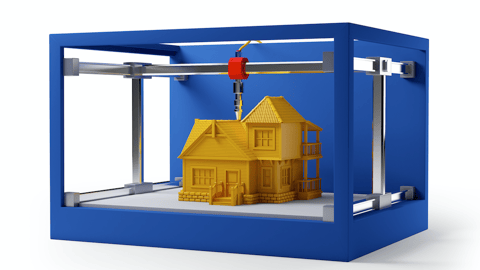Coming to Austin: a neighborhood printed in 3D
The science of 3D printing and its application to homebuilding have been talking points for years at forward-thinking conferences and trade show exhibits.
It’s even been tried as experiments in post-disaster recovery projects around the world.
But here’s news of plans for a 100-home project outside of Austin, Texas, with one of the nation’s leading builders – Lennar – heavily involved in the project.
Lennar and ICON, a construction technologies company capable of large-scale 3D printing, announced a commitment to build the largest community of 3D-printed homes to date using ICON’s robotics, software and advanced materials. Breaking ground in 2022, the 100-home community will be co-designed by the architecture firm, BIG-Bjarke Ingels Group.
Some of the challenges facing traditional builders are helping to push the 3D envelope, the company said.
“Labor and material shortages are two of the biggest factors pushing the dream of home ownership out of reach for many American families,” said Eric Feder, President of LENX, a division of Lennar. “Lennar has always expanded the boundaries of technological innovation to keep quality homes affordable and 3D printing is an immensely encouraging approach. We are excited to collaborate with ICON to develop solutions to emerging challenges in the coming years.”
ICON’s Vulcan construction system can deliver homes and structures up to 3,000 square feet that are built to the International Building Code (IBC) structural code standard and can be expected to last as long or longer than standard Concrete Masonry Unit (CMU) built homes, the company said.
The latest announcement between Lennar and ICON expands a relationship that began with Lennar’s investment in Austin-based ICON’s recent $207-million financing round.
Both companies say the deal offers a “promising path toward delivering affordable, technology-driven homes that meet rising demand.” That optimism is supported by the results of a recent HBSDealer reader poll, in which 51% of respondents expect 3D printing to play a role in housing "to a small extent," and another 15% expect the same to “a large extent.”
A third of respondents answered that 3D printing will not play a significant role in the future of housing.
The architects of the Austin project sees potential in 3D printing as well as photovoltaic roofs to improve efficiency and sustainability. “Additive manufacturing has the potential to revolutionize the built environment as it gets adopted by the industry at scale,” said Martin Voelkle, partner of BIG-Bjarke Ingels Group.




